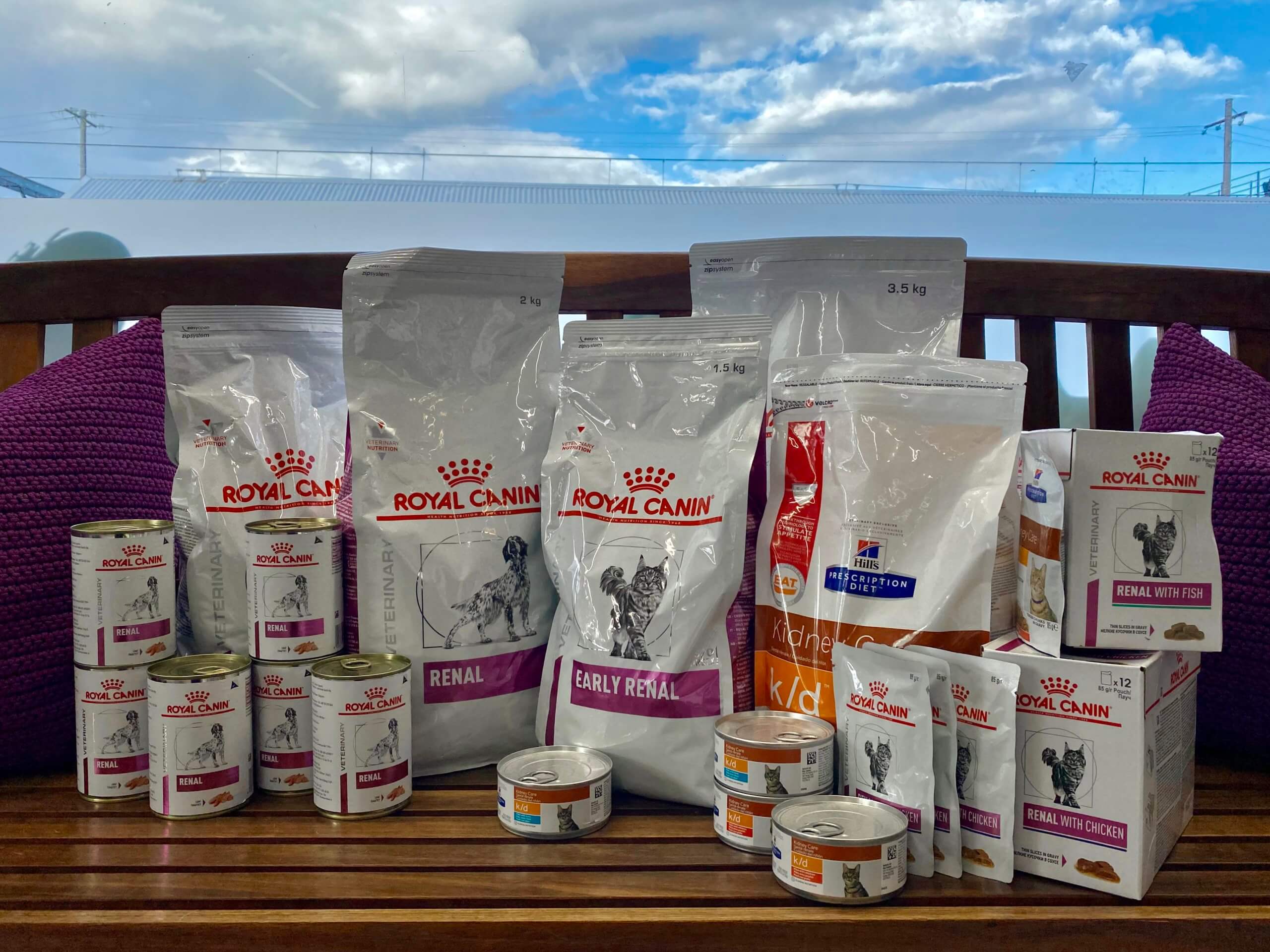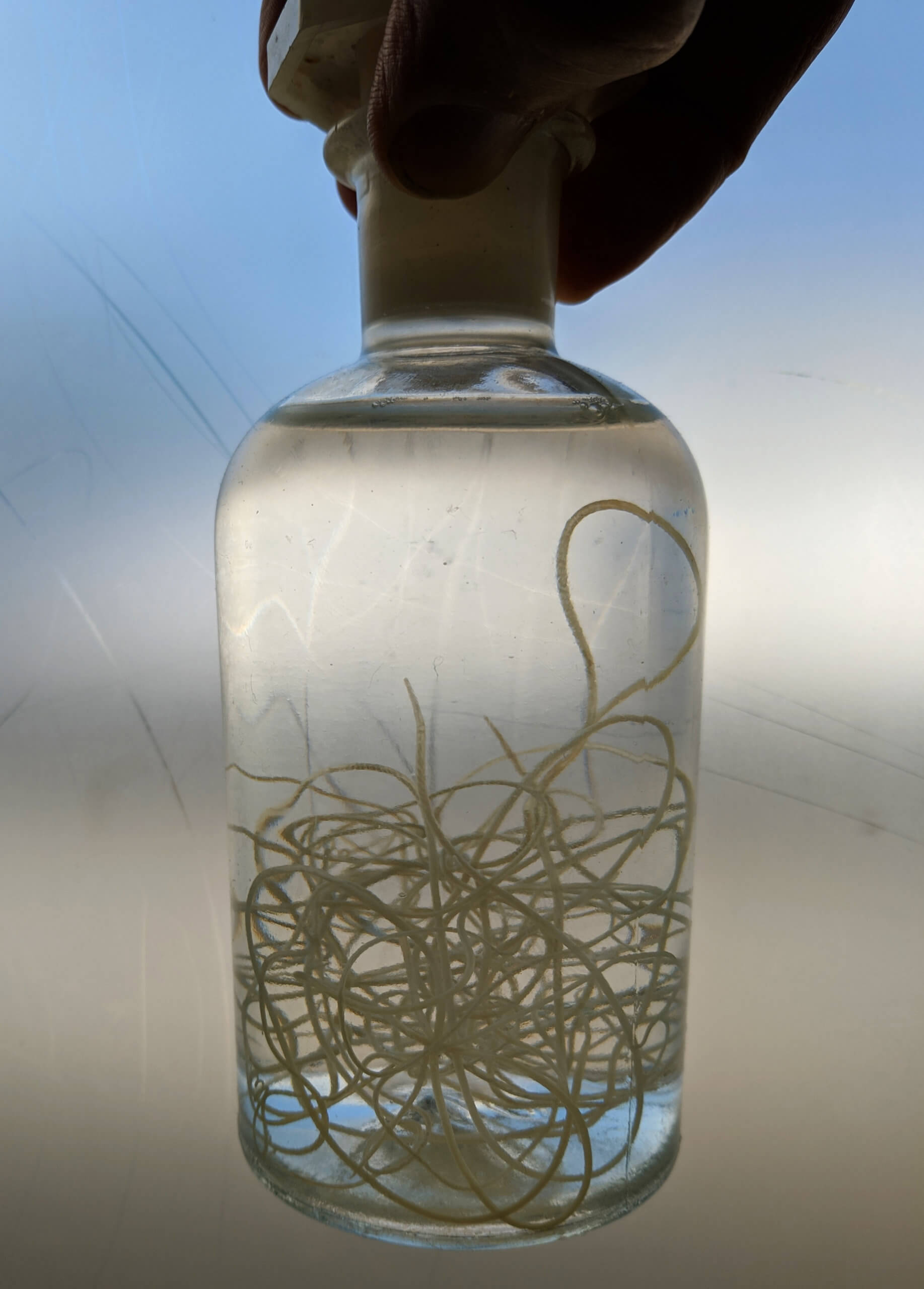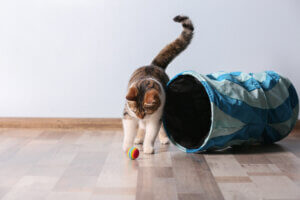Chronic Kidney Disease and Your Senior Pet
/in News /by sumHill Chronic kidney disease, and the signs to look out for
Chronic kidney disease, and the signs to look out for
Chronic Kidney Disease (CKD) occurs when the kidneys are unable to perform their job of filtering blood, removing waste and returning fluids to the bloodstream, as a result of structural and/or functional abnormalities in one or both kidneys for 3 months or longer. As a consequence, waste products (urea, creatinine, hormones etc.) and excess fluids build up in the body. Signs may present as increased urination, increased drinking, decreased appetite, gastrointestinal signs (vomiting, diarrhoea, constipation, nausea, anorexia), lethargy, weight loss, muscle wasting. This disease is more common in older animals, which is why we suggest annual health checks for your senior pet!
I think my furbaby has CKD signs. What should I do?
Visit your veterinarian for a CKD workup. Where CKD is suspected, a routine investigation will be carried out. This often includes blood and urine tests.
If diagnosed, your vets may conduct further tests to stage the disease based on the International Renal Interest Society (IRIS) staging. IRIS staging can assist with the development of appropriate, logical treatment plans for each CKD stage.
What can I do to help manage CKD?
Management is targeted to keep the excesses and deficiencies minimal. The use of prescription renal diets have been shown to be the most important intervention that can prolong survival time in CKD patients. All animals with CKD stage 2 to early stage 4 should be placed on a renal diet! These renal diets are designed to control the intake of phosphorus, protein, sodium, B-vitamin, and soluble fiber and are enriched with Omega-3 polyunsaturated fatty acids (PUFAs) and antioxidants. The single most important thing you can do to increase the acceptance of renal food is gradual transition over 3-4 weeks.
Royal Canin offers renal diets, such as the renal special and renal. Renal special is basically the same as renal diet, but for fussy patients that will not eat the normal renal diet. There are other brands that support renal diet too, such as Hills k/d, Specific CKW heart and kidney support and Eukanuba renal diet.
*Renal multi-function + hydrolysed protein, renal support + advanced mobility support, renal support – A (Aromatic), D (Delectable), E (Enticing), F (Flavorful), S (Savory), T (Tasty) are not available in Australia and New Zealand.
Early CKD may not have any symptoms
Kidneys have a greater capacity than needed to keep us healthy. This is why you can donate one kidney and stay healthy, or you can have kidney damage without any symptoms as your kidneys are still doing its job to keep you feeling well. In the early stage, it is possible the only way to know if your pet has kidney disease is to get their kidneys checked with blood test and urine test. It is recommended that a full health check be performed every 6 months. Early Renal diet, a senior diet that has reduced protein and phosphorus, may be recommended when the dog is diagnosed in CKD stage 1. They should be switched to a renal diet should the creatinine elevate outside of reference range.
We provide Royal Canin renal and Hills k/d at Summerhill Village Vet 🙂
We can also order specific food for you! Call us on 02 9797 2555 to inquire.

Brown Dog ticks & the new disease of Ehrlichiosis
/in News /by sumHillBrown dog ticks & the new disease of Ehrlichiosis.
What is a brown dog tick?
The Brown Dog tick gets its common name from its overall reddish colour. It has 6-8 legs, is an oval shape and becomes grey-blue when engorged. In the past we were pleased when a dog got one of these on them because at least it wasn’t the dreaded paralysis tick but now we aren’t so blasé.

These ticks have been found to cause Ehrlichiosis, an emerging disease found in dogs caused by a tick-borne bacteria called Ehrlichia Canis. Symptoms of this disease can resemble many other conditions with similar signs so if you are unsure, your veterinarian can examine and discuss diagnosis and treatment options. It hasn’t been found in NSW yet but that’s is only a matter of time & if you do go travelling interstate then your pet is definitely more at risk.
According to National pest & disease outbreaks, the brown dog tick has been confirmed in parts of Western Australia, the Northern Territory and in South Australia. An in depth look at the brown dog tick, where it has been found and information on the current conditions of travel with your dog can be found here https://www.agriculture.gov.au/biosecurity-trade/pests-diseases-weeds/animal/ehrlichiosis-in-dogs.
Tick prevention
Traveling with your dog can increase the risk of being exposed to this disease. We recommend that if you are travelling to areas where the brown dog tick is present that you can do the following to reduce their risk of contact:
- Using tick prevention such as Bravecto spot-on or chews
- Inspecting your dog regularly for ticks, especially if they have been in a tick infested area. To do so, run your fingers through your dog’s coat, over their skin and feel for any abnormal bumps. Pay attention to the head and neck, inside the ears, o their chest and under their front legs, between their toes and around their mouth and gums.
Avoid travelling with your pet to areas where significant tick populations occur unless you have them well protected.
Heartworm
/in News /by sumHillHeartworm
How Do Dogs Get Heartworm?
Mosquitoes.
The heartworm cycle begins when a mosquito bites an infected dog. The mosquito swallows the blood containing tiny larvae (baby pasrasites), and develops the larvae further inside the mozzie. The mosquito then deposits the now-infected larvae into another dog the next time it feeds.
What Does Heartworm Disease Looks Like?
The infected larvae mature slowly over six months until they reach full adult size, which can be up to 30cm long. The worms attached to the walls of major blood vessels & inside the heart itself, increasing the heart’s workload and restricting bloodflow to the lungs, kidneys and liver.

Many dogs with heartworm have no obvious symptoms. Visible symptoms may take as long as a year or more to appear when much of the damage has already been done. Dogs with severe heartworm infestations have a cough and are clearly unwell. Sudden death can also occur.
By the way cats don’t get heartworm very often but in them it causes sudden death rather than a cough.
How Vets Diagnose Heartworm?
If a dog has not been on prevention &/or has symptoms we can take a sample of blood & run a test in-house.
Can Heartworm Be Treated?
Yes, but treatment is risky, difficult and costly.
How is Heartworm Prevented?
ProHeart SR-12 is a yearly injection that takes away the need for you to remember a monthly treatment.
Other heartworm preventions include a liquid applied to the skin or a monthly chew or tablet.
The good news is that veterinary heartworm preventions work very, very well.
Santa Paws 2021!
/in News /by sumHillHalloween and Your Pets
/in News /by sumHill
Halloween is around the corner and we are cautioning pet owners to be aware of the stresses and dangers that come with the tricks and treats.
Halloween in Australia is not as popular as in the United States, but we are seeing an increase in trick-or-treating and often kids appear at the door not dressed as they normally are. You don’t have to look scary (to be frightening to animals) – you just have to look different. Up to 20 per cent of pets already have an anxiety disorder and any change in routine can be upsetting to them.
When pets get scared, they can run away, become aggressive or become anxious.
Even if your dog or cat is the most placid animal, on Halloween people look different and behave differently, and this can cause your pet to react unexpectedly.
Tips for a safe and stress-free Halloween for pets
If you know your pet will be worried, talk to us about anti-anxiety medication (not sedatives, which do not decrease anxiety or fear). There are also pheromone collars and diffusers to help pets with mild anxiety which we can prescribe.
Keep your pets indoors and stay with them if you can. Black cats have been the target of malicious acts and are best kept inside during this time.
If you’re going out and nobody is home, put your pet away from the front door. If people come knocking on the door, make sure your dog or cat cannot run out when you greet them.
Make sure your pet is microchipped and carries an identification tag on the collar – with all contact details up-to-date, in case your animal goes missing,
Keep lolly wrappers, decorations and lighted pumpkins out of your pet’s reach. No chocolate! And if you decide to dress up your pet, ensure the costume doesn’t restrict movement, vision, hearing or ability to breath.
Wearing a costume can be stressful for some pets so don’t dress your pet unless you know they enjoy it.
Also, best not to take dogs trick-or-treating as they may become excited and uncontrollable. You don’t want a frightened vampire dog on the loose!
Presenting our Summer Hill Village Vet 2021 Trailer!
/in News /by sumHillIn an effort to contribute to our local community we sponsored Ashfield Public School’s 2021 Movie Night.
The sponsorship involved the clinic showcasing a little video introducing you to the Summer Hill Village Vet Team, we hope you enjoy it! 🙂
Food Allergies in Dogs
/in Dog Care, News, Uncategorized, Vet Clinic /by sumHillDid you know that 6-20% dogs have food allergies?
You may be one of the excellent pet owners who feeds your dogs premium food and keeps them up to date with flea and tick treatment – so why is it that your furry friend is still experiencing itchy skin and diarrhoea?
What is food allergy in dogs?
Just like humans, dogs can be allergic to certain kinds of foods. Food allergy is a common cause of skin disease in dogs, it is an immune-mediated hypersensitivity reaction which reacts to a specific food protein. Dogs affected by food allergy will usually show dermatological signs without a seasonal pattern and some may also have gastrointestinal signs at the same time.
What are the clinical signs of food allergies in dogs?
Dermatological/skin:
– Red, swollen, itchy skin
– Licking and chewing of paws
– Skin problems localised to paws, face, ears, abdomen or genital area
– Chronic infection can lead to self-induced hair loss and recurrent ear infection
Gastrointestinal:
– Irregular bowel movement
– Halitosis (bad breath)
– Soft stool/ diarrhoea
– Nausea
– Excessive gas
What food is my dog allergic to?
The most common food allergen for dogs is animal based protein (usually beef, chicken, lamb or dairy products). While less common, dogs can also be allergic to plant-based proteins such as wheat, soy, rice and corn. Unfortunately most pet foods, regardless of the advertised flavour, will contain traces of these ingredients so it is best to consult with your vet to determine what food are safe when undergoing a food elimination trial.
 How is a food allergy confirmed? Are there any straightforward diagnostic tests available?
How is a food allergy confirmed? Are there any straightforward diagnostic tests available?
Unfortunately, the answer is no. Due to the fact that the clinical signs of food allergies are non-specific and overlap with other common skin conditions, it is often difficult to confirm food allergy in the first place. If vets are suspecting food allergy in your dog, they will often suggest conducting a food elimination trial.
Food elimination trial involves three steps:
1. Eliminate the suspected proteins
2. Replace diet with a novel/ hydrolysed protein. Discuss with a vet the best type of food and length of time for trial.
3. Re-introduce the eliminated proteins one by one and observe for recurrence of clinical signs.
What do I have to do if my dog is diagnosed with a food allergy?
The answer is very simple, stop feeding the food that causes a reaction! There are commercial pet diets that are made with novel proteins such as fish, kangaroo and crocodile. Otherwise, there are prescription diets available made with hydrolysed protein – which is when the protein is broken down into tiny pieces that the immune system does not detect and react to.
One study showed that after eliminating the suspected food allergen- 82% of dogs with dermatological signs improved within 3 months and 61% of dogs with gastrointestinal signs improved within a month.¹
For more information on food allergy or other skin diseases, please make an appointment to speak with one of our vets (02 9797 2555/ contact@summerhillvillagevet.com)
References:
- Tiffany, S, Parr, JM, Templeman, J, Shoveller, AK, Manjos, R, Yu, A, & Verbrugghe, A 2019, ‘Assessment of dog owners’ knowledge relating to the diagnosis and treatment of canine food allergies.’ The Canadian Veterinary Journal = La Revue Vétérinaire Canadienne., vol. 60, no. 3, pp. 268–274.
Complexity of Skin Disease
/in Cat Care, Dog Care, News, Vet Clinic /by sumHillWe wish we had one simple solution for your pet’s skin problems but due to the complexity of skin issues, multiple diagnostic tests and elimination trials are often needed to reach a diagnosis.

What causes skin disease in dogs?
There are a number of causes for skin disease in dogs including:
- Parasites such as fleas or mites
- Allergies to environmental factors such as pollen, plants, mould, insects and grass
- Allergies due to food, preservatives or ingredients in human or animal products
- Bacteria or yeast overgrowth, either as a primary problem, or secondary to an allergy
- Underlying medical or genetic conditions that can contribute to poor skin health.
With such an extensive list of factors to consider, you can start to see why it often takes multiple vet visits and routes of investigation before we are able to come up with a diagnosis and best treatment.
Many diseases look the same, and one disease can present in different ways – it’s tricky!
The skin can only react to a problem in limited ways – such as redness, itching, hair loss, pustules or nodules. Therefore many different diseases may cause the same change to the skin (food allergies, scabies mites and bacterial infections all cause itch, but require very different treatments!).
Additionally, one disease can show multiple symptoms such as demodex mites causing hair loss, redness AND pustules.
Even after diagnosis, regular check-ups may be needed. When your dog’s skin condition “flares up” you should let us know – we may need to do additional testing to see whether the condition has changed or whether secondary infection is present. Regular check ups will ensure your pet’s skin heals effectively and can mean shorter treatment periods. This not only saves money in the long run but most importantly, makes your pet feel better, sooner!
How can I prevent skin disease in my dog?
Unfortunately skin disease is not always preventable, but there are steps you can take at home to minimise certain symptoms.
For animals with allergies – bathing with Aloveen Shampoo will help to remove allergens from the coat and soothe dry, irritated skin.
For animals prone to skin infections – bathing with Malaseb Medicated Shampoo or Pyohex Medicated Shampoo once a week to once a fortnight all year round can reduce bacteria and yeast and prevent overgrowth.
For more information on skin disease please speak with one of our vets or nurses or make an appointment today (02 9797 2555/contact@summerhillvillagevet.com)
Need a print out? Click here to download our PDF on the Complexity of Skin Disease
We have a handout about itchy pets you can also read through
How to keep your indoor cat happy
/in Cat Care, Home, News, Uncategorized /by sumHillA common misconception with pet owners is that cats are low maintenance and anti-social – this could not be further from the truth! They may have a different way of expressing their needs to their canine counterparts but cats thrive on social interaction.
These days more and more people are choosing to keep their cats indoor to protect them from fighting, decrease risk of injury and getting hit by a car, and to protect them from infectious disease such as FIV. There is nothing wrong with keeping your cat indoors, especially if you live in a high traffic area- however, the challenge of doing such is to ensure they receive the environmental stimulation they need to avoid getting bored.
Cats have a need to exhibit hunting behaviour- to play and to explore. When necessary they should also be able to find a place where they can retreat and hide.
Here are a few tips and tricks to help you keep your indoor cat stimulated:
 Play time:
Play time:
Cat owners should dedicate time daily to play with their cats. A variety of toys are needed, with different textures, colours and shapes. Using different toys each time you play can also help motivate your cat. This is a great way to get your furry friend using their natural instincts in a safe environment!
You can also encourage movement by installing climbing shelves to give your cat the option to get up high and survey their domain 🙂 There is a Facebook group dedicated to people sharing their DIY indoor cat projects if you need some inspiration
Scratching:
Who could forget a scratching post? This is a necessity for all cats, especially indoor cats. Scratching is a natural instinct for our furry friends and it is very important that your cat can do this regularly. This also protects your carpets and furniture from any possible damage. You can use catnip spray on these areas to encourage use.
Hunting:
The feline desire to hunt is natural and instinctive. Regardless of how much food you feed them, your cat will always have a hunting instinct. If something moves rapidly or squeaks with a high pitch noise, this will trigger a reaction. You can purchase toys that imitate real prey through size, texture, colour and sound. This helps to fulfil the social and natural needs that are essential to our furry family members.
Make food time fun:
While cats do not find any benefit in specific meal times, fun puzzle feeders or feeder toys can be a great way to keep portion sizes in control and promote their natural scavenging behaviour. It is beneficial to make your cat work for their food through these toys or by scattering food bowls around the house for them to find.
Getting some fresh air:
For the owners who like to offer their cat some time outside, there are the lead and harness options. However, it can be difficult for cats to enjoy or learn to walk on a lead. It is best to introduce this type of walking early on when they are kittens so that they can get used to this approach. You can also purchase outdoor cat enclosures, ideally a pen, that keeps them outdoors and safe. Remember that if your cat is having outdoor access even if on a lead, it is important to stay up to date with flea and worming preventatives.
These are only some of the ways you can keep your furry family member active and happy whilst staying indoors. If you notice a change in your cat or they are struggling with the transition from outdoors to being inside, please contact us. We can provide behavioural assistance and advice to help your cat enjoy life indoors.
Get In Touch
Phone: 02 9797 2555
Emergency: 02 9758 8666
Email:
contact@summerhillvillagevet.com
Consultations (by appointment):
Monday-Friday: 9am - 11am and 4pm - 7pm
(till 9pm on Mondays)
Saturday: 9am - 2pm
How To Find Us
29 Grosvenor Crescent
Summer Hill NSW 2130
(corner of Sloane St & Grosvenor Cres,
on the Nth side of the line at Summer Hill station)
Our Hours
Mon: 8:00 AM to 9:00 PM
Tue: 8:00 AM to 7:00 PM
Wed: 8:00 AM to 7:00 PM
Thu: 8:00 AM to 7:00 PM
Fri: 8:00 AM to 7:00 PM
Sat: 9:00 AM to 2:00 PM
Sun: Closed | Public Hols: Closed
Servicing Surrounding Suburbs
Vet Ashfield | Vet Ashbury
Vet Dulwich Hill | Vet Petersham
Vet Lewisham | Vet Canterbury
Vet Croydon | Vet Croydon Park
Vet Five Dock | Vet Hurlstone Park
Vet Burwood | Vet Lilyfield
Vet Stanmore | Vet Marrickville
Vet Burwood Heights | Vet Rozelle
Vet Campsie | Vet Annandale
Vet Earlwood | Vet Enmore
